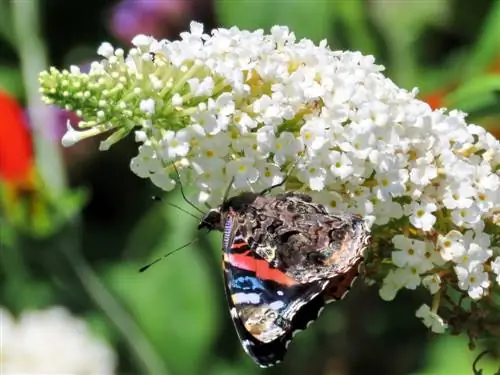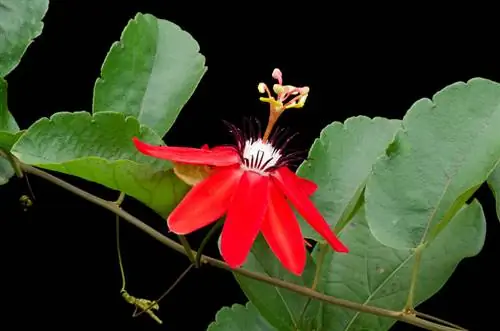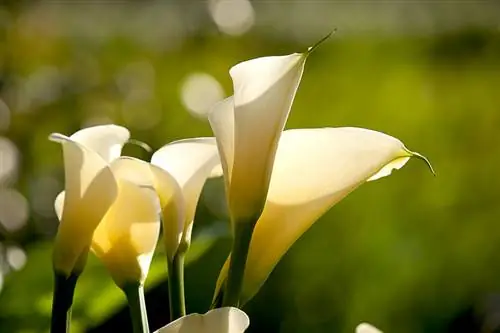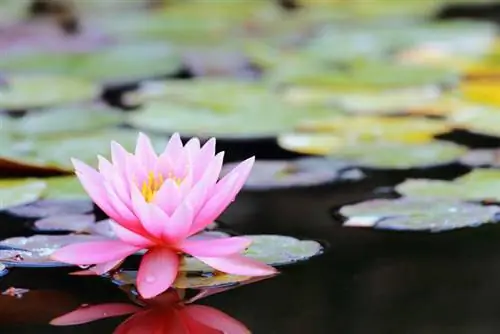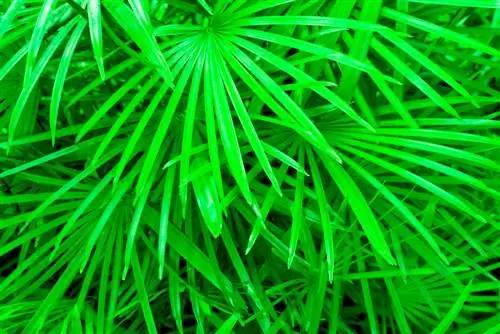- Author admin [email protected].
- Public 2023-12-16 16:46.
- Last modified 2025-01-23 11:21.
This neophyte, which comes from Asia, can often be found in front gardens and gardens, but also in parks, on embankments or even released into the wild: we are talking about buddleia or butterfly lilac. In contrast to many other introduced plant species, Buddleja, the scientific name of the ornamental shrub, turns out to be an extremely popular pasture for numerous insects, especially butterflies, bees and bumblebees. For this reason, don't hesitate to plant this beautiful and easy-care shrub in your garden - we recommend setting up an insect hotel in the immediate vicinity. By the way, small species can also be easily cultivated in a pot.
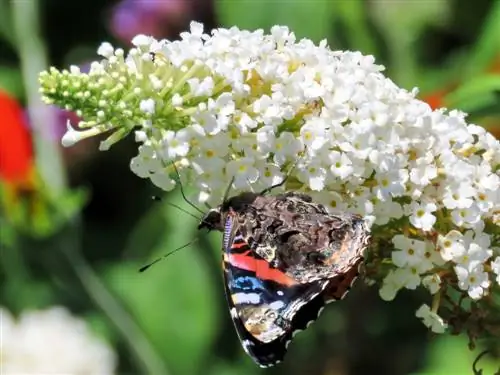
What characterizes the buddleia?
The buddleia (Buddleja) is an undemanding ornamental shrub that grows between 200 and 500 cm high. It prefers sunny to semi-shady locations and attracts numerous insects such as butterflies, bees and bumblebees with its fragrant flowers in various shades of pink, purple and white.
Buddleia - a brief overview
- Botanical name: Buddleja
- Genus: Buddleia
- Family: Figwort family (Scrophulariaceae)
- Popular names: butterfly lilac
- Origin and distribution: subtropical and tropical regions of America, Africa and Asia
- Growth habit: shrub-like or tree-like, slightly or strongly overhanging
- Growth height: depending on the species between 200 and 500 cm
- Typical characteristics: Flowers have a strong attraction for insects, especially. a. Butterflies, bees, bumblebees
- Location: sunny to light partial shade
- Soil: moderately dry, well drained
- Flowers: arranged in panicles up to 30 centimeters long
- Flower colors: various shades of pink and purple, white
- Flowering time: usually between July and September / early October
- Leaves: elongated, serrated, dull green; shedding leaves
- Use: ornamental shrub in gardens and parks, as a solitary plant, in groups, as a hedge or (small varieties) in a pot
- Toxicity: slightly toxic, toxins mainly in leaves and seeds
- Winter hardiness: depends on variety
Characterization, species and varieties
The buddleia or butterfly lilac is a busy summer bloomer that is usually grown as a shrub or subshrub. It has a strong similarity to the common lilac, although it blooms in May. Both species exude a strong scent that is particularly irresistible to insects. Depending on the species, the buddleia can grow up to 500 centimeters high and up to 300 centimeters wide.
No relation to the common lilac
Despite their similarity, buddleia and common lilac are not related. Both species belong to different genera. The two best-known types of buddleia, Buddleja davidii and Buddleja alternifolia, also differ in their flowering and growth behavior. While the former blooms well into autumn, the Chinese or alternate buddleia shows its blooms between May and June. In addition, B. davidii flowers on the young shoots, while B. alternifolia develops them on the previous year's shoots - this information plays an important role, especially when pruning.
Tip
The buddleia is quite undemanding when it comes to soil and care. However, when it is doing well, it reproduces very quickly. For this reason, to prevent spreading, you should remove the inflorescences immediately after flowering. For targeted varietal propagation, cutting cuttings is recommended.

